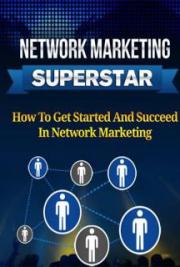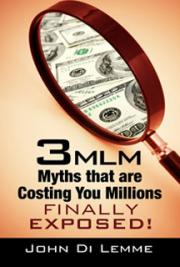Closing The Sale
By AllTrainers.com
Introduction
The most important aspect of any sales process is the close. This is the point at which your prospect becomes your client and agrees to your services. The close finalizes the sale, but is actually developed through the entire sales process. The process of closing a sale and securing a customer is complex with intricate parts. However, there are a few fundamental techniques that most successful sales people use to secure sales.
Regardless of whether you are using hard line tactics, or a soft unimposing sales style, there is a standard process that has been proven time after time to increase the number of people that you can close. The process follows a standard format that usually includes:
1. Introduction
2. Data gathering
3. Trial close
4. Continued data gathering
5. Attempted Close
6. Negotiation
7. Close
The format varies from company to company, and sales person to sales person, but essentially these are the steps to closing your sale.
Introduction and Data Gathering
During this stage of the sales process, you attempt to establish a rapport with the customer, and find out his/her motivation for being in your presence. This portion of the sales process is very important because it establishes the ground rules for the rest of the sale. At this stage, the customer neither likes nor dislikes you. He/she does not know you! At this point, be as friendly as possible, and try to establish a positive rapport. By doing this, the entire process will be much more enjoyable for both of you.
After introducing yourself begin gathering information about your prospects wants and desires. The simplest question to begin with is "What brings you here today?" This starts the process, but the prospects answer will not provide you with much information. Use his/her answer to lead you into a line of questioning that will uncover your prospects underlying motivation for being there. You may have to rephrase the question and ask it again to get to the information you seek.
Many times, the answer you receive will be a cover for some other motivation. For example, a standard answer to the question above is "I was in the neighborhood." This does not provide any information, nor does it justify why your prospect took the trouble to get out of his/her car, open a door, and seek you out. With answers like " I was in the neighborhood," You may want to rephrase the question to overlook the obvious response. A follow up question to the answer above would be "Aside from being in the neighborhood, what brings you here today?" By eliminating the obvious answer as a prelude to asking your question, you increase the likelihood that the answer that you receive will contain information that is of value to you.
The underlying idea behind asking these questions is to uncover the motivating points, or hot buttons, that will help you close your prospect. Every person has reasons for wanting a product or service. If you can uncover these reasons, it will be much easier to close the sale. For this reason, it is imperative to ask questions. Use open-ended questions to uncover motivation. If the prospect wants to lose weight, find out why. Is it to feel better, to fit into their cloths, or to look good at their high school reunion? This information will be invaluable to you throughout the sales process.
Along with open-ended questions, it is wise to use closed ended questions (questions that can be answered with yes or no) to guide your conversation. With closed-ended questions, you can lead the prospect down a path of agreement that concludes into one final yes. When using closed ended questions, it is usually a good idea to ask questions that result in a yes answer; "Do you think that you would look and feel better if you lost weight?" Many psychologist and professional sales people argue that people in general like to please and agree with others. Use this to your advantage by providing your prospect with the opportunity to practice saying yes. It will help to put them in a mindset where they will agree to your services. After you have gathered some information about your prospects motivation, initiate a trial close.
Trial Close
The trial close is intended to feel out the prospect and determine how close you are to completing the sale. Some of the time you will be lucky and the customer will buy right then. However, most of the time it will take a bit more coaxing.
For the trial close, summarize a little bit of the information that the customer has volunteered. Touch on some of their hot buttons, then ask them, "When would you like to get started?" Judge their response to determine where you are in the process. Do they ask for additional information, do they provide you a start date, or do they seem a little bit confused? Use the response to determine the next step in the sales process.
Continued Data Gathering
If they respond negatively to the trial close, show understanding at their hesitation, and proceed to gather more information. Get more information about their goals, their desires, and their wants.
It is important to note that during this stage of the process, the best motivator that you have to encourage a sale is emotion. Health and Fitness is an intangible that can best be sold through emotion. Regardless of the claimed motivation of the person for being in front of you, the actual reason for them being there has an emotional foundation. Most people seek trainers so that they will feel better. Capitalize on this by using descriptions that will create emotion and excitement about your services.
Many successful fitness trainers use the following process during this stage of the sale.
1. Describe the current state of fitness that the customer is in. Use terms that they have used previously in your discussion. If they are trying to get into shape, use terms like lethargic, slow,
and tired. Use pictures and visual aids to emphasize their current state, and ask for agreement when you ask questions. The reason for this step is get the customer to get in touch with the underlying emotions for them being there. If they feel bad about themselves, then it is even more encouraging for them to want to change.
2. Describe the process that they will experience while being trained by you. Describe the workouts, and the changes that they will see in their body. Use positive words and emotion while describing this process. Once again, visual aids will help to increase the emotional desire for your services.
3. Describe how the prospect will look and feel after achieving their goals. Help them visualize attaining their fitness goals, and feeling exhilarated and empowered by their success. Show them how much better their life will be after they complete your program. Once again, visual aids help tremendously.
Attempted Close
At this point, you should have enough information to close your prospect. If you have managed to rouse the prospects enthusiasm for your services. The close should be successful. The close should be relatively simple and straightforward. "When would you like to schedule your first session?" works tremendously.
It is very important at this stage of the sales process that you DO NOT TRY TO CLOSE WITH A CLOSED ENDED QUESTION! Always attempt to close by asking a question that requires more than yes or no. It is also helpful to word the question in a manner that implies that the customer has already agreed to your services. It is much harder for a prospect to back out of "When would you like to start?" than it is for "Do you want to begin training?" Word your close so that the customer must commit to a start date or to some portion of your services. Don’t make it easy for them to say no.
Negotiation
Much of the time, it will take more than the attempted close to complete the sale. At this point, it is a matter of negotiation to make the prospect commit. If they don’t say yes at the trial close, ask why. Once again, look for the underlying answers by rephrasing questions. If they say "I need some time to think about it," respond by saying: "Aside from needing some time, what else is prohibiting you from making a commitment today?" Use these types of questions to determine what factors are prohibiting your prospect from committing to your services. Determine what the underlying reasons for their hesitation are, and use the information that you gathered earlier to overcome their uncertainty. As you address their fears, use positive comments and emotion to make the prospect feel better about making the commitment. Once again, emotion is key in making the customer excited about purchasing your services.
After addressing the prospect’s hesitation, try to close the sale again. If they still are unwilling, go back through the process of determining what other factors are hindering the completion of the sale. "Aside from needing some time, and not knowing if you can meet at scheduled times, what else if stopping you from making a commitment today?"
The process of negotiating the close is long and involved, but follows the simple patters of trying to close, addressing concerns and invoking positive emotion, and trying to close again. Much of the time the process is relatively short, but occasionally it can be quite lengthy.
Conclusion
As a personal fitness trainer, you are an independent businessperson who must sale your services to your clients. The process is straight forward, but requires practice. Every person has their own sales style, and approach to obtaining customers. The process described above is very effective, but is only a guide to help you improve your sales techniques.
Some final notes regarding the process:
1. Early in the sales process, obtain your prospects contact information. You will need it if they buy, but you will need it even more if they don’t. If the prospect does not purchase, you will need their contact information so that you can try to close them at a later date. There is no better sales lead than a not quite closed sale.
2. It is in your best interest not to let the prospect easily walk away. Statistically speaking, 85% of people who walk out of a sales negotiation to take time to think do not return on their own accord.
The Trainer’s Marketing Association is here to help you succeed as a personal trainer. If there are resources that that you would find useful please contact us at feedback@alltrainers.com We offer assistance with marketing packages, sales tools, and customer resources. It is our intent to provide you with the tools necessary to excel as a personal fitness trainer.
This Tutorial May Be Published and Distributed Freely







